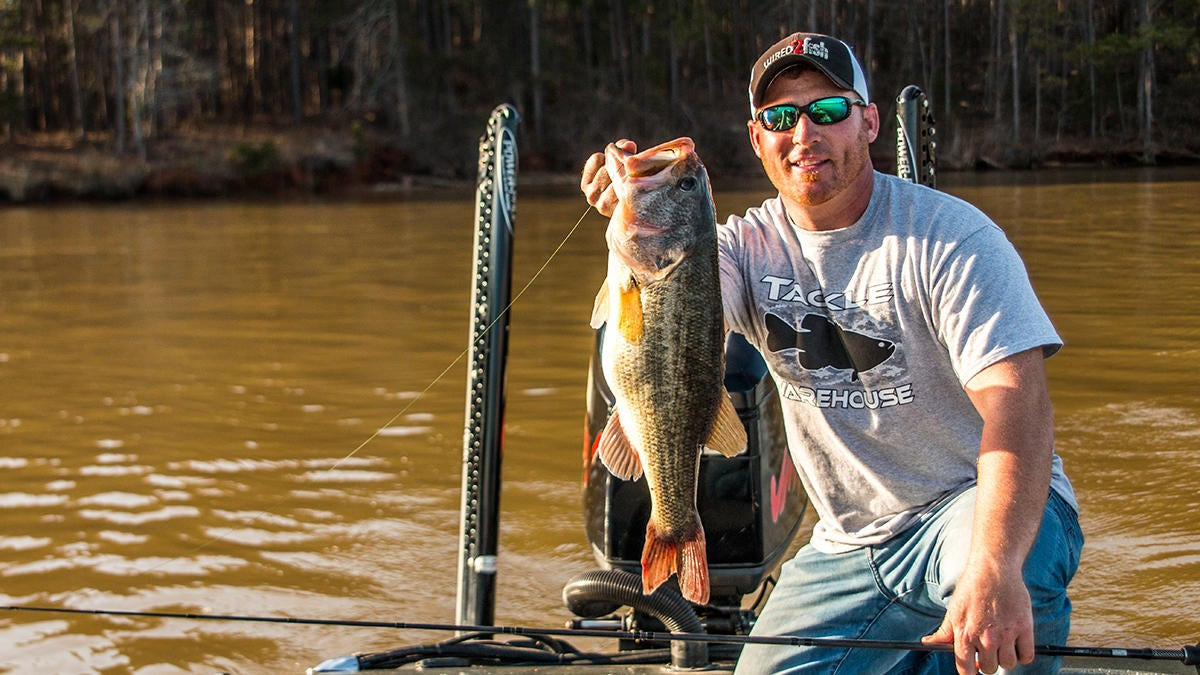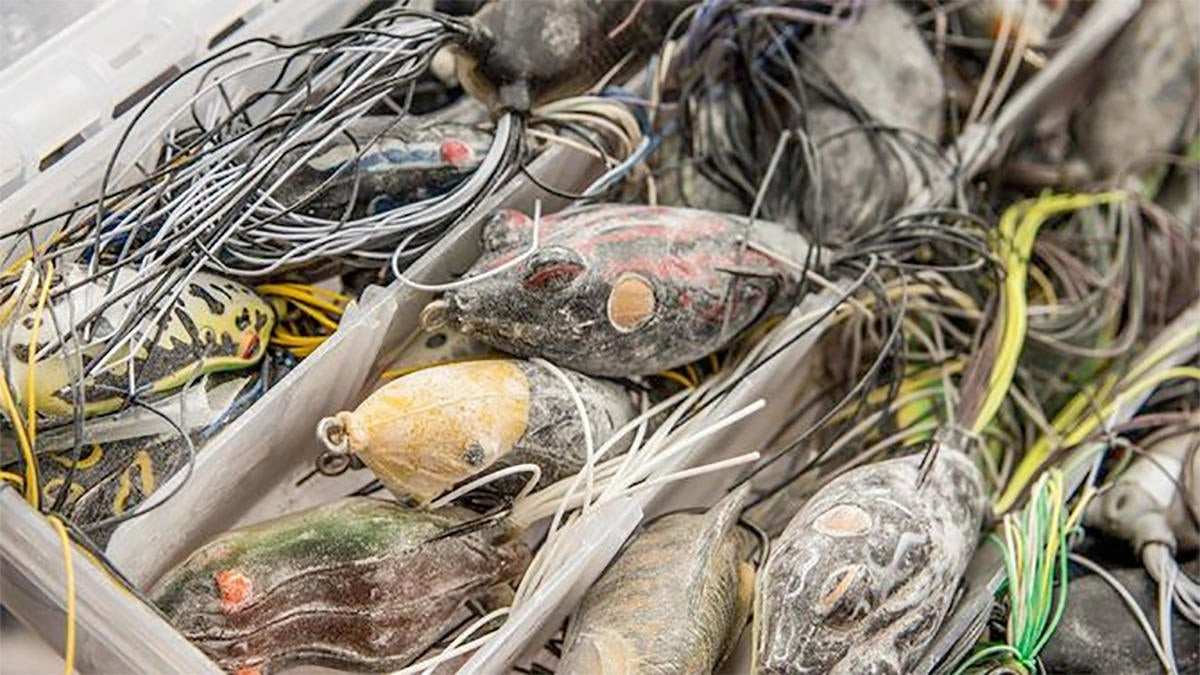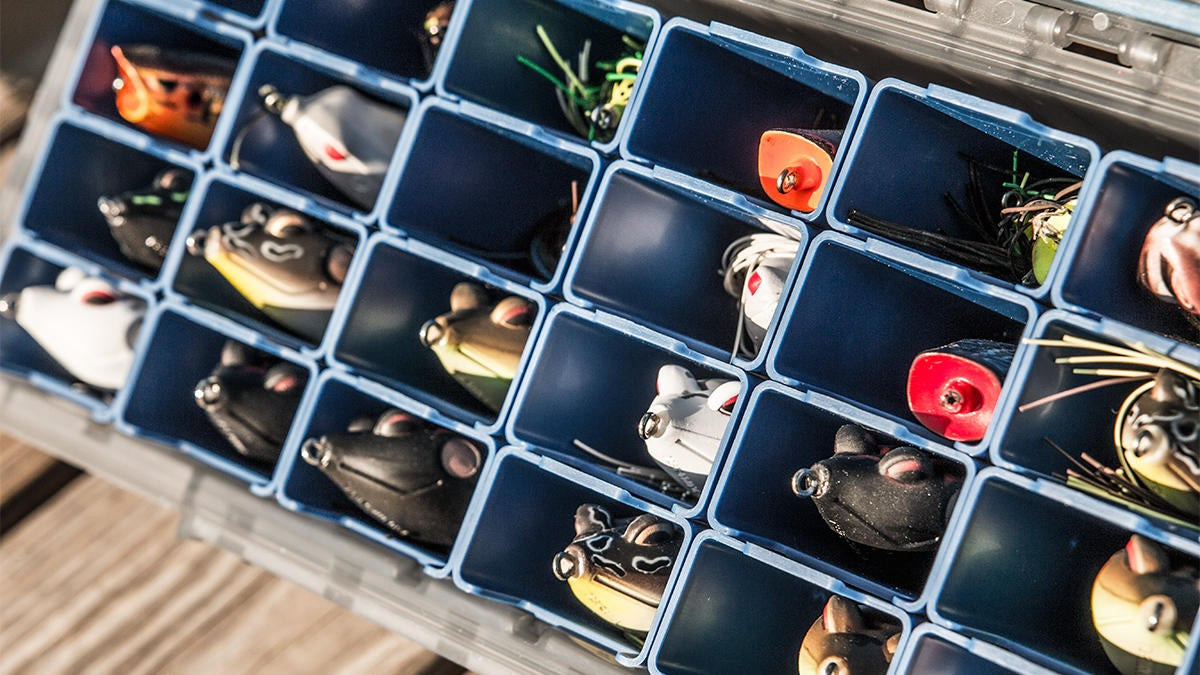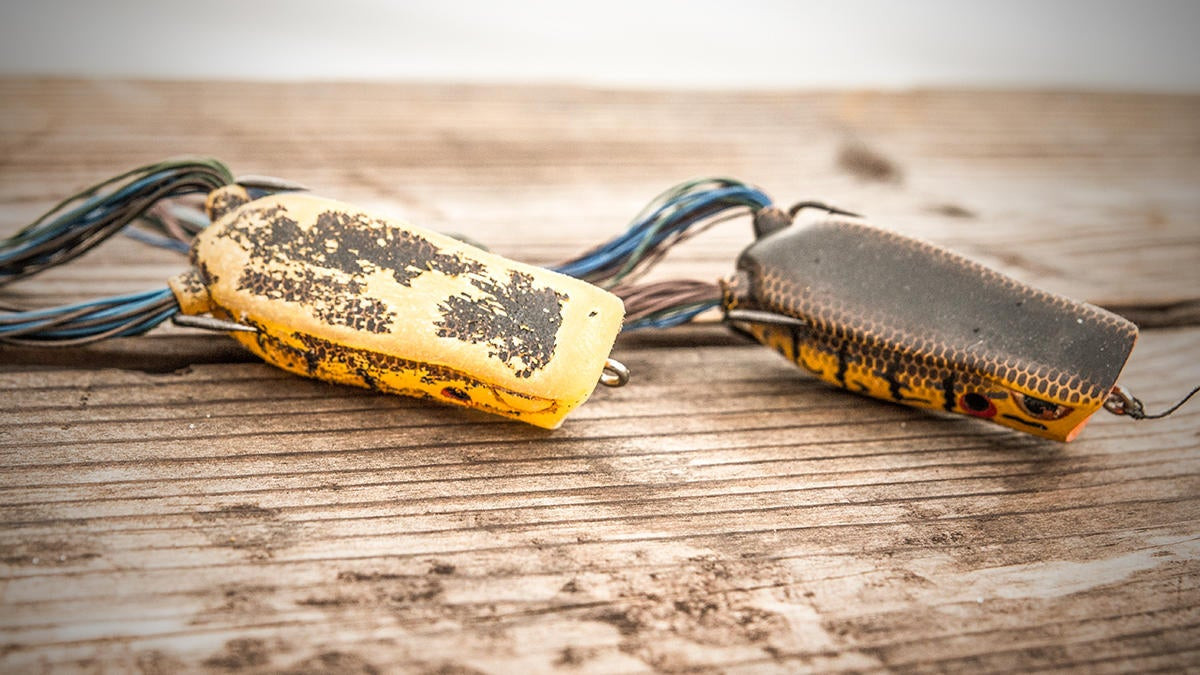There are few better things on this earth than a topwater frog bite. Watching that frog walk side-to-side on the surface and seeing a wake approach it from several feet away will simply never get old to me. If I ever get tired of it, that’s probably a sign that I need to quit bass fishing.
I’ve noticed, however, that a lot of folks are blowing through money when it comes to their frog collections. I understand having a bunch of different brands and styles to cover different situations but honestly, I think we could all save a lot of money when it comes to frog fishing.
Before you ditch your well-used frogs in favor of a new one straight from the package, consider the following options. I have a few frogs that have lasted upwards of a decade by using these easy hacks.
Grab some cheap baby powder at the store
I wrote an article about this five years ago after spending a day in the boat with professional angler Randall Tharp. Maybe I was just naive going into it but I definitely raised an eyebrow when he pulled out his frog box. Each frog he had was absolutely covered in some sort of chalk-like substance and of course, I had to ask him what the heck happened to ’em. He chuckled and began to explain how big of a difference baby powder can make on topwater frogs.
“Most of the silicone legs on frogs will stick together after a single day of fishing,” Tharp said. “I don’t know if it’s the heat or the type of water, but they’ll melt and adhere together like those old-school spinnerbait skirts and totally ruin the frog. I have several prototype frogs that won’t be released for several years and I absolutely have to keep them in good condition because I can’t get any more of them. Messed up legs aren’t an option.”
To be honest, I stewed on this idea for most of my drive home from Lake Guntersville. My biggest worry was that the bass would be able to somehow smell or taste the baby powder which would either deter them from biting or make them spit the frog out before the hookset. After a few days of internal back and forth, I finally bit the proverbial bullet and decided to dump a bunch of cheap baby powder on my expensive frog collection. It was actually a pretty tough thing to make myself do.
Five years later, however, I can safely say that ol’ Randall Tharp was right. I’ve been doing this ever since and my frogs are in outstanding condition compared to the pre-baby powder days. I haven’t noticed any ill effects in regards to the number of bites whatsoever. I’ll take a frog out of the box, tie it on and slap it on the water a time or two and the water washes off the powder without any issues.
Get a bigger tackle tray
I’ve mentioned several times in the past that I try to make my tackle storage as modular as possible. Essentially, I want to be able to use the smallest tackle trays I can so I can easily take things in and out of my boat or quickly grab a few boxes to jump in a buddy’s boat at the last minute.
I have tried this thought process with frogs until I’m blue in the face and man… it just doesn’t work for me. I’ve tried to put my frogs in smaller tackle trays in the name of mobility or accessibility but I just can’t get on board with it. Whenever I try to stuff a bunch of frogs into a too-small tray, I end up with crimped legs and warped bodies; both of which can significantly hinder the action and effectiveness of your favorite frogs. You let those frogs sit in a cramped tackle tray for days at a time in the Georgia heat and I can guarantee you’re going to burn through some money.
Everyone is going to have their own preferred storage method or tackle tray for frogs; there are a lot of options out there for you. But I started tinkering with the Flambeau ZERUST MAX Crank Bank and although it was initially intended for crankbait storage, it’s a legit option for safely storing a bunch of frogs. If you have a bunch of average-sized frogs (i.e. SPRO Poppin’ Frog 60 or something of similar size) you can fit 72 frogs in a very small and compact box.
The frogs are stored vertically with this box which, in my experience, has drastically reduced any crimping of the legs of warping of the bodies. You certainly don’t have to buy this particular box but at the very least, make sure you don’t make the same mistake I made for a few years. Don’t cram a bunch of frogs into a smaller tackle tray. Give ’em some room and pay a couple extra bucks for a larger box to avoid premature damage to the frogs.
Try this first before you toss a frog with crimped legs
Crimped legs on a frog are a big no-go for me and most likely, a bunch of other shallow-water anglers would probably say the same thing. If they get pinched while in storage, it can really mess up the action of the frog. I reckon it’s kind of like a paper airplane… it can be 99% perfect but if there’s one wrong fold, it ain’t gonna fly. It’s the same way with topwater frogs; just a few jacked-up legs can make a bass laugh at your frog.
I started messing around with this about six years ago if I remember correctly. I initially began boiling Zoom Super Flukes in water because I had a bunch that got all crimped up sitting in storage for too long. It sure enough worked and it actually saved me a pile of money. So heck, I started trying to boil frog legs… artificial ones. Not real ones.
I can absolutely suggest doing this to some of your frogs with crippled legs. Just boil some water on the stovetop, grab the body of the frog with a set of grilling tongs and dip the legs in the water for 20 seconds or so. Those legs will become totally straight again and breathe new life into some of your old favorites.
Do not get spun out by the top of the frog
This is something that makes folks spend a lot of unneccessary money in my opinion. They’ll have a few favorite frogs and when the color starts to get scratched off the top from teeth marks, they’ll toss the dang frog and go buy another one. To each their own but I’m not about all that. Dust comes out of my wallet when I open it so I want to get every cast I can out of every frog I buy.
The bass do not see the top of your frog. I don’t care if its tye-dyed, rainbow colored, pink or bright purple; I have never seen a bass jump over a frog before biting it just to check what color is on the top. The top colors of a frog catch fishermen. The bottom and side colors catch bass.
As long as you still have a little color on the belly of your favorite old frog, keep throwing the dang thing until it rips apart or the hooks break. In my mind, these battle-scarred frogs are irreplacable and for whatever reason, they just seem to catch more fish. I’m sure it’s just a weird confidence thing, but don’t think a frog needs to be perfect to catch a pile of big bass. If the components are still good and you have a little color left on the belly… send it, man.
With frog season ramping up all around the country, make sure you try these tips. I write these articles to help folks learn from my boneheaded mistakes, so I hope you try some of these things. If you take care of your frogs, you can use ’em for several years without having to constantly replace them.
















